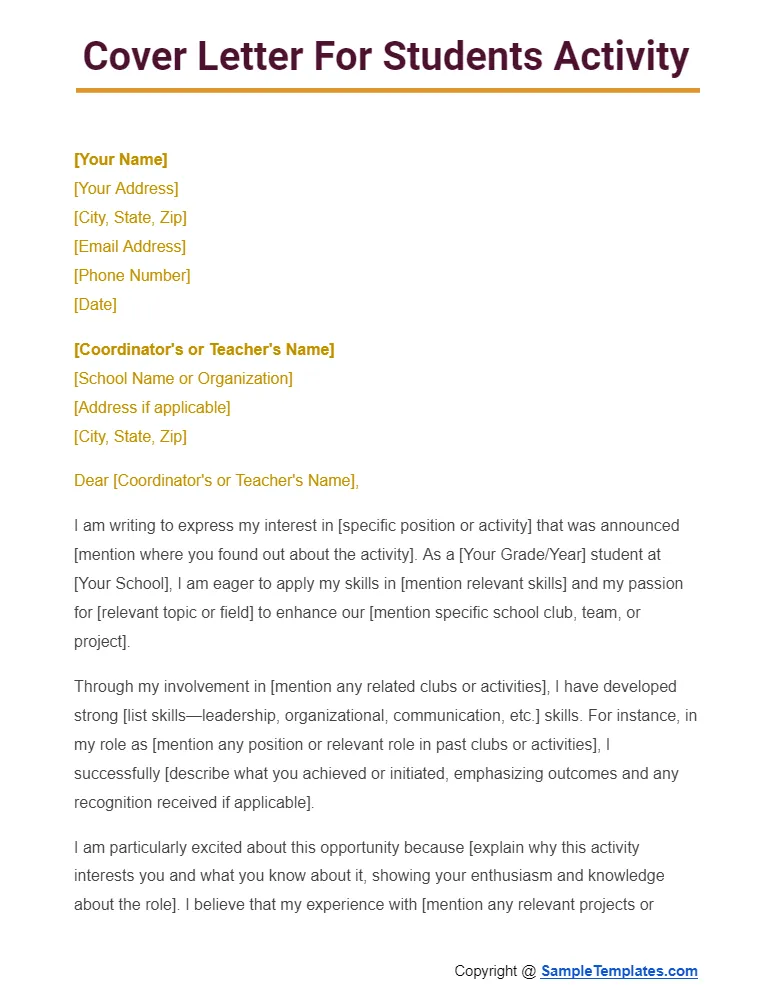Why Cover Letters Matter for Students
As a student navigating the job market, a well-crafted cover letter is your secret weapon. It’s more than just a formality; it’s your first impression, your chance to shine, and a crucial element in securing your desired position. This document provides a platform to express your unique value and qualifications. While your resume provides a snapshot of your experiences and skills, the cover letter allows you to elaborate, contextualize, and connect with the hiring manager on a personal level. It bridges the gap between your qualifications and the employer’s needs, painting a vivid picture of why you are the ideal candidate.
Understanding the Purpose of a Cover Letter
The primary purpose of a cover letter is to introduce yourself to a potential employer and express your interest in a specific job. It’s your opportunity to explain why you’re a good fit for the role, highlighting your relevant skills, experiences, and passion. Unlike a resume, which is a factual record, a cover letter allows you to tell a story, connecting your background to the company’s needs. It provides context, allowing you to expand on your accomplishments and demonstrate your personality. The ultimate goal is to persuade the hiring manager to read your resume and consider you for an interview.
Key Elements of a Student Cover Letter
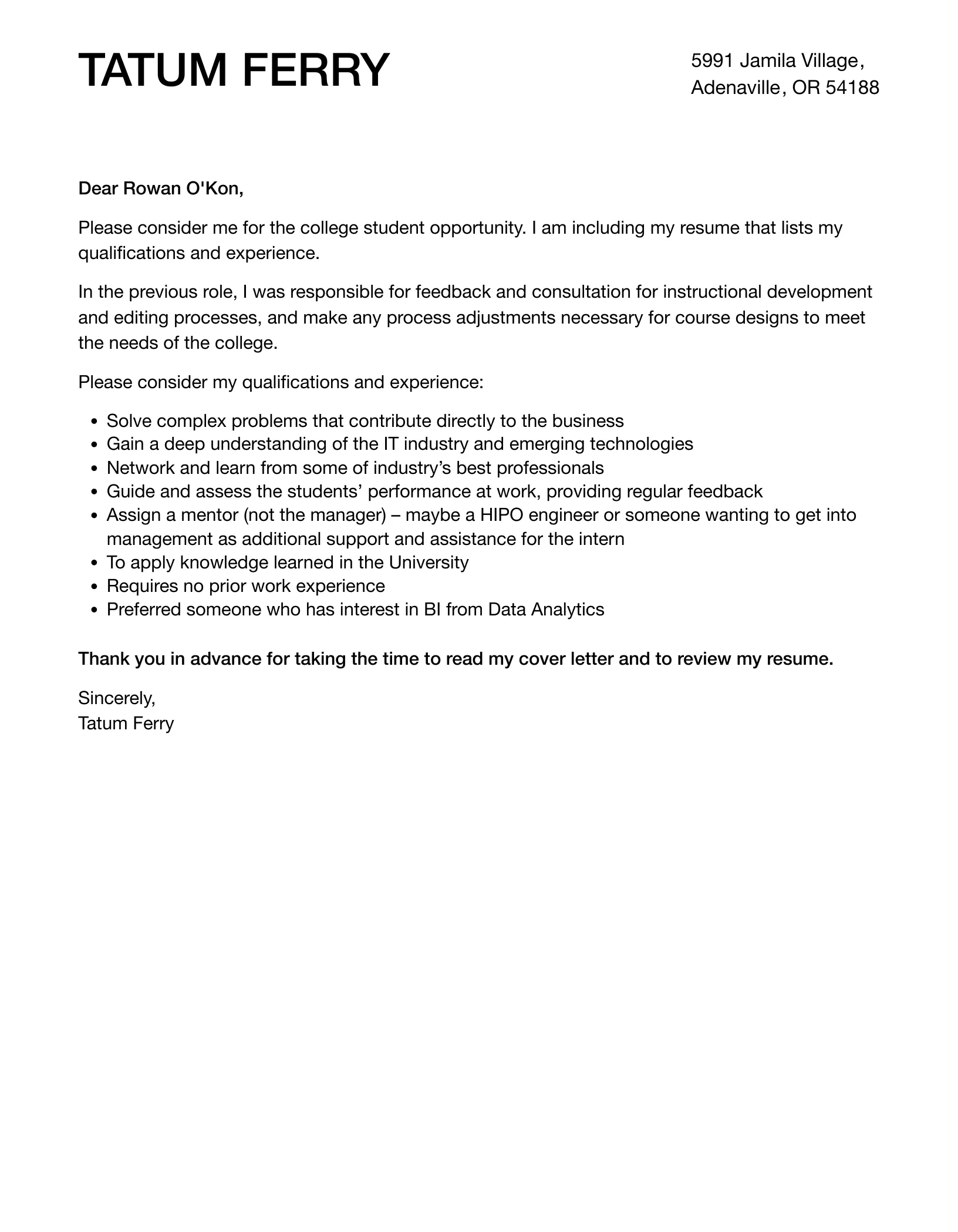
A strong student cover letter typically includes key elements to make a lasting impact. Begin with a professional header including your contact information. A personalized greeting, addressed to the hiring manager or a specific individual, immediately grabs attention. The opening paragraph should state your interest in the position and briefly summarize your qualifications. The body paragraphs should elaborate on your skills, experiences, and how they align with the job requirements. Use specific examples to illustrate your achievements. Conclude with a paragraph reiterating your interest and thanking the reader for their time. Close with a professional closing and signature.
Essential Tips for Writing a Great Cover Letter
Tip 1 Tailor Your Cover Letter to the Job
One of the most crucial tips is to tailor your cover letter to each job you apply for. Generic cover letters are easily spotted and often discarded. Carefully read the job description and identify the key requirements. Then, customize your letter to highlight the skills and experiences that directly match those requirements. This demonstrates that you understand the role and have taken the time to personalize your application. Include relevant keywords from the job description, ensuring your letter resonates with the employer’s needs. Show that you’ve done your research and are genuinely interested in the specific opportunity.
Tip 2 Highlight Relevant Skills and Experiences
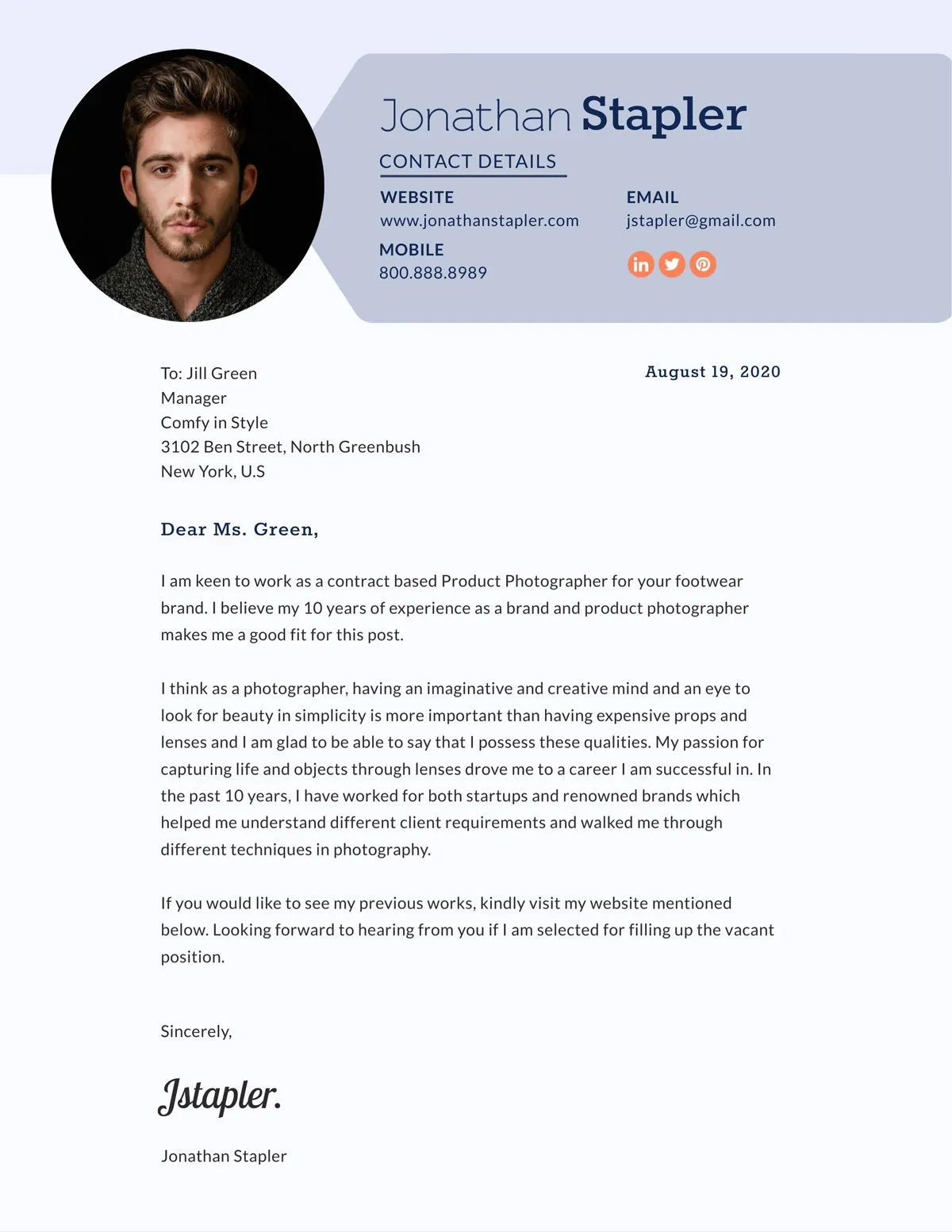
Even as a student, you likely possess skills and experiences that are relevant to the job you’re applying for. Think beyond your coursework and consider volunteer work, internships, extracurricular activities, and part-time jobs. Identify the skills that are transferable, such as communication, teamwork, problem-solving, and time management. Provide specific examples of how you’ve used these skills to achieve results. Quantify your accomplishments whenever possible, using numbers and data to showcase your impact. For example, “Managed a team of 5 volunteers” or “Increased social media engagement by 20%.” This concrete evidence strengthens your claims and demonstrates your capabilities.
Tip 3 Showcase Your Personality
Your cover letter is an opportunity to let your personality shine through. While professionalism is essential, don’t be afraid to inject your unique voice and enthusiasm. Share your passion for the field, your interest in the company, and what motivates you. Use a tone that is authentic and engaging, reflecting your personality while remaining appropriate for the context. This helps the hiring manager get a sense of who you are beyond your qualifications. Showing your personality can make you more memorable and help you stand out from the crowd. Make sure to maintain a professional tone while expressing yourself.
Tip 4 Proofread Carefully
Before submitting your cover letter, meticulously proofread it for any errors. Typos, grammatical errors, and inconsistencies can create a negative impression, suggesting a lack of attention to detail. Read your letter aloud to catch any awkward phrasing or sentence structures. Ask a friend, professor, or career counselor to review your letter for a fresh perspective. Even a minor mistake can undermine your credibility and diminish your chances of landing an interview. Ensure your contact information is accurate. Proofreading is a crucial step in ensuring your cover letter makes a positive impact and leaves a lasting impression.
Tip 5 Follow Up

After submitting your application, following up demonstrates your continued interest in the position. A week or two after the application deadline, send a polite email to the hiring manager or recruiter. Briefly reiterate your interest in the role, referencing your cover letter and resume. Express your enthusiasm for the opportunity and inquire about the timeline for the hiring process. This shows that you are proactive and engaged. However, avoid being overly persistent or contacting the company multiple times. A single, well-timed follow-up email can make a positive impression and keep you top-of-mind.
Cover Letter Template Structure for Students
Header and Contact Information
Your header should include your name, address, phone number, and email address. Ensure your email address is professional. If you have a LinkedIn profile, include the URL. The header should be neatly formatted and easy to read. This information allows the employer to easily contact you and is a standard component of any cover letter.
Greeting
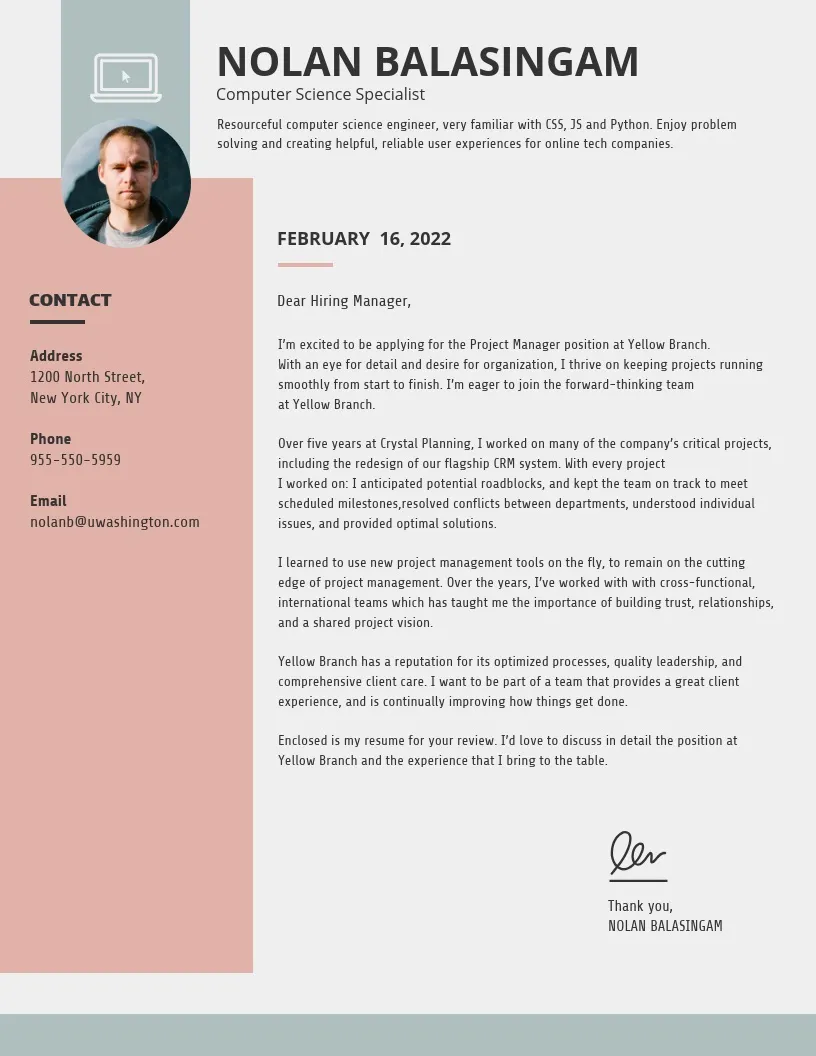
Address the hiring manager by name if possible, researching the hiring manager or recruiter. If you cannot find a specific name, use a professional greeting like “Dear Hiring Manager” or “Dear [Company Name] Hiring Team”. Avoid generic greetings like “To Whom It May Concern”, which can make your letter feel impersonal. A personalized greeting shows you’ve taken the time to research the company and the role.
Opening Paragraph
The opening paragraph is your opportunity to grab the reader’s attention. State the position you’re applying for and where you found the job posting. Briefly mention why you’re interested in the role and the company. Summarize your key qualifications or experiences that make you a strong fit. Make sure the opening paragraph sets the tone for the rest of your letter and immediately conveys your enthusiasm.
Body Paragraphs
The body paragraphs are where you expand on your qualifications and experiences. Highlight your skills and achievements, providing specific examples and quantifiable results. Tailor each paragraph to address the requirements outlined in the job description. Explain how your skills align with the company’s needs and what value you can bring to the role. Use strong action verbs to describe your accomplishments and avoid simply listing your responsibilities. Focus on what you achieved and the positive impact of your contributions.
Concluding Paragraph
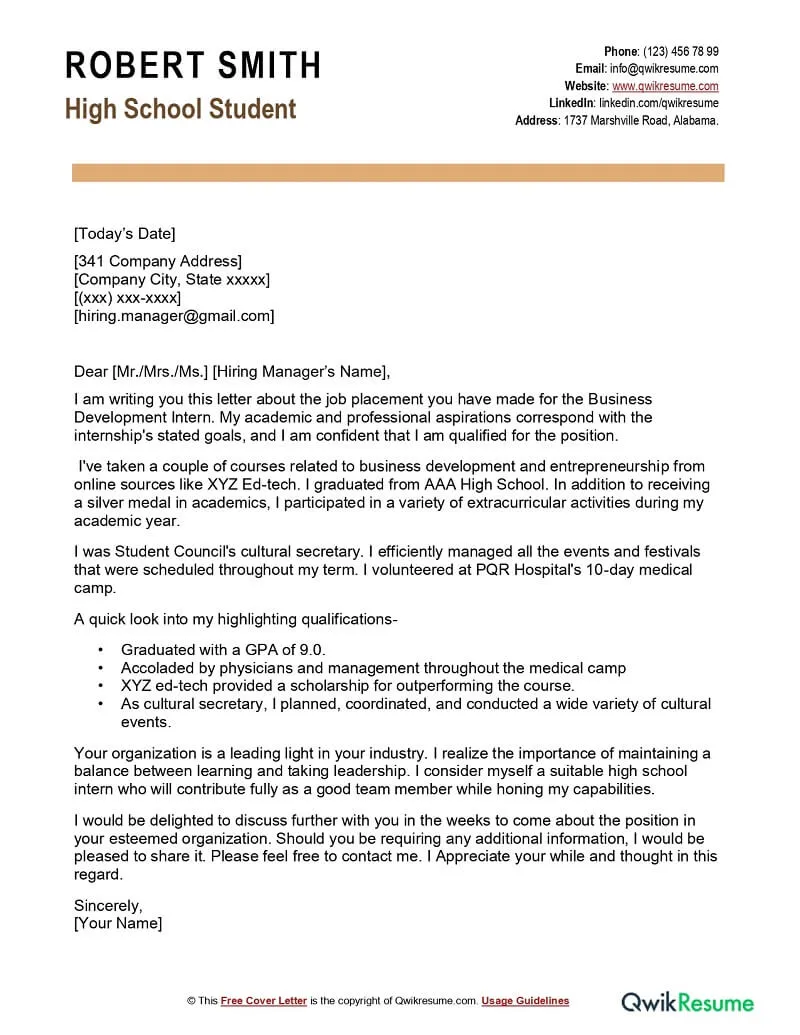
In the concluding paragraph, reiterate your interest in the position and thank the reader for their time and consideration. Express your enthusiasm for the opportunity to learn more about the role and the company. Include a call to action, such as stating your availability for an interview. Restate your contact information for easy reference. Make sure your closing paragraph leaves a positive and memorable impression.
Closing and Signature
Use a professional closing such as “Sincerely,” “Best regards,” or “Thank you”. Sign your name, either typed or handwritten. If you are submitting an electronic cover letter, your typed signature is sufficient. Ensure that your closing is consistent with the overall tone of your letter, reflecting your professionalism and enthusiasm.
Common Mistakes to Avoid in Student Cover Letters
Lack of Customization
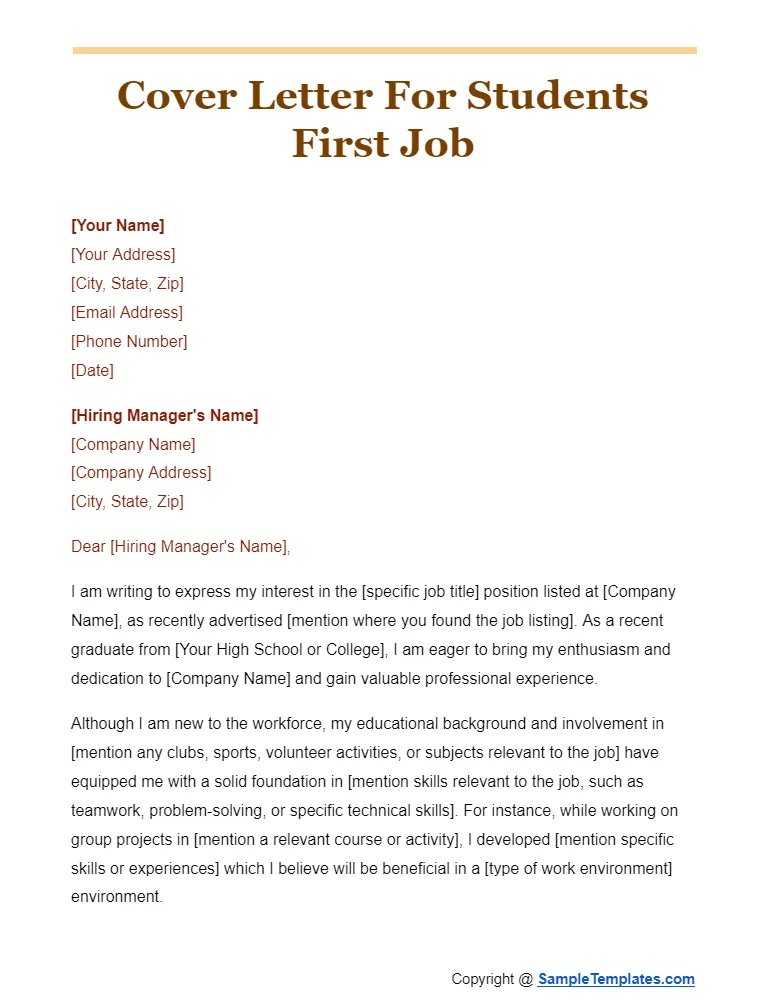
Avoid sending a generic cover letter to multiple employers. Take the time to tailor each letter to the specific job and company. This demonstrates your genuine interest and attention to detail. Research the company, the role, and the hiring manager to personalize your letter. Highlighting specific aspects of the job description and the company’s mission makes your application stand out. Customize your letter to show that you understand the company’s needs and how your skills align with the role.
Typos and Grammatical Errors
Proofread your cover letter meticulously to avoid typos and grammatical errors. These mistakes can make you appear careless and unprofessional, regardless of your qualifications. Read your letter aloud to catch any awkward phrasing. Have a friend, professor, or career counselor review your letter. Errors in spelling or grammar can diminish your credibility. Careful proofreading is essential to ensure your cover letter makes a positive impression.
Generic Content
Avoid using generic phrases and clichés in your cover letter. Provide specific examples of your skills and experiences. Don’t just say you are a “team player”; describe a time when you successfully collaborated on a project. Avoid generic statements like “I am a hard worker” or “I am a quick learner”. Instead, showcase your accomplishments and skills through concrete examples. The more specific and detailed your content, the more compelling your letter will be.
Ignoring the Job Description
Carefully review the job description and address the specific requirements in your cover letter. Highlight the skills and experiences that align with the job requirements. Use the keywords from the job description throughout your letter. By demonstrating that you understand the role and possess the necessary qualifications, you increase your chances of being selected for an interview. Ignoring the job description or not tailoring your letter accordingly is a common mistake that can lead to rejection.
